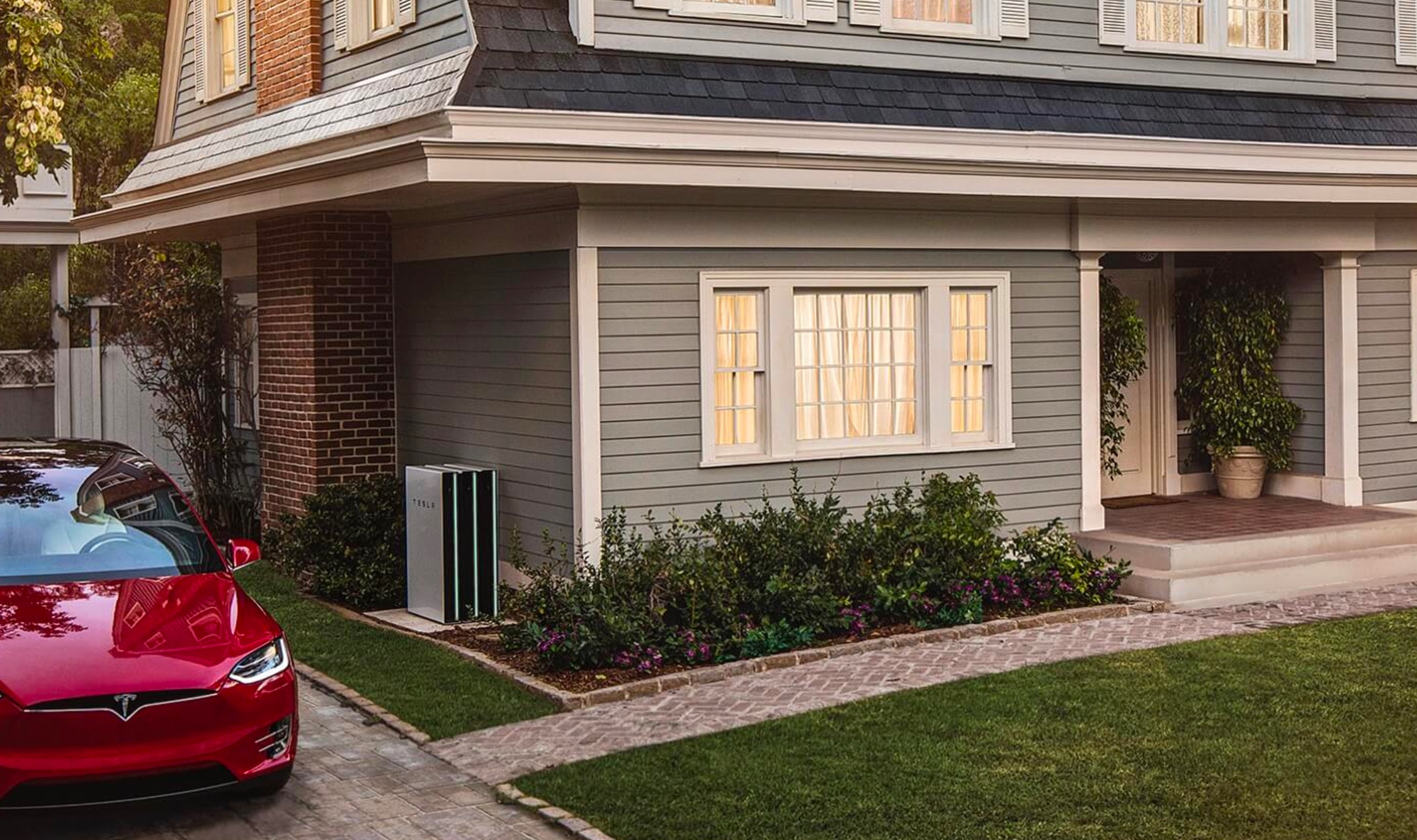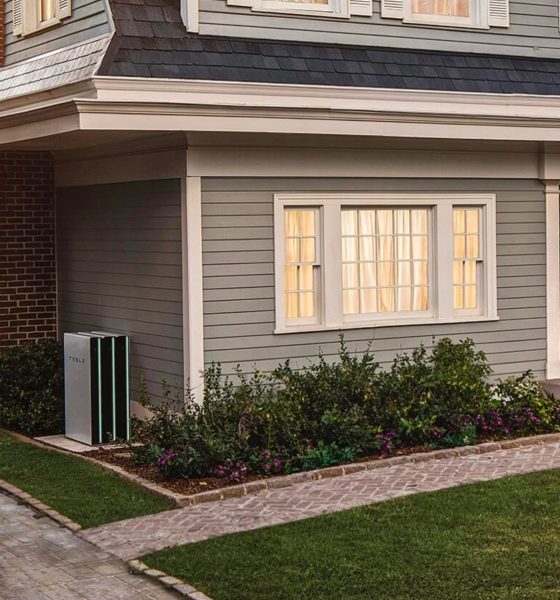

Energy
Tesla’s solar roof cost calculator validated by Consumer Reports
Consumer Reports has double-checked Tesla’s math behind its solar roof tile calculator and confirmed that estimates provided by the company are accurate. The consumer ratings agency notes that pricing varies depending on where the individual lives, as geography dictates available sunshine and utility rates which ultimately determines if the innovative solar roof tiles makes sense as a purchase.
Tesla’s new solar roof tiles are warrantied for 30 years against weather and ensures that the new roof doesn’t leak after installation. The roof tiles themselves are physically warrantied forever or as long as the home lasts, “whichever comes first” per Tesla.
It’s important to note that conventional solar panels will almost always come in at a lower total installed cost, a faster “breakeven point” and ultimately generate more value for the homeowner over their useful life than a home with a Tesla Solar Roof. On the other hand, the new roof tiles do come with a very impressive warranty that adds value beyond just their solar energy production value.
Consumer Reports starts off with a huge admission that it did not factor in any solar incentives or rebates in their calculations. In the US, this is a 30% rebate at the federal level alone and represents an inexcusable omission in their calculations. With Tesla’s numbers coming in below the target price of $24.50 per square foot without the rebates, it is clear that the new solar roof tiles met the financial requirements of Consumer Reports.
To see what the payouts look like in a few areas in the U.S., Consumer Reports pulled the numbers from Tesla’s website to see if the new solar roof tiles would be a good investment in three very different area: New York, Texas and California.
The value of Tesla’s Solar Roof ultimately hinges on the amount of energy the solar roof tiles will generate. Sunny California tops the list as the state that will provide the most return for a solar roof investment, while Texas rounds out a close second. New Yorkers looking to purchase a solar roof will see the least value purely because of its northern location which receives less face time with the sun. This dictates the volume of energy the tiles can create, and thus how much money it can save a homeowner.
The other contributing factor to the equation is the price of electricity in the area. If the price of electricity is high, the value of the energy produced by the tiles is effectively worth more. In New York state, the average price of electricity is above the national average of 12 cents per kilowatt hour, coming in at 17.5 cents per kilowatt hour. Texas is at the opposite end of the spectrum at 11.41 cents per kilowatt hour and represents a less lucrative home for a solar system while California takes first place with the highest price at 18.68 cents per kilowatt hour (per EIA data from Feb 2017).
After running the numbers through Tesla’s Solar Roof calculator which you can do for yourself, Consumer Reports found that the installation in New York would payout and save the homeowner money over 30 years, largely due to the high price of electricity in the area. Consumer Reports also noted an additional state incentive to install solar in New York that would potentially slash another $5,000 off of the total purchase price.
Installing the solar roof tiles on a home in Texas would not payout due to the lower cost of electricity in the area. Finally, the home in California was a shoe in with high electricity cost and abundant sunshine.
The Consumer Reports analysis highlights that Tesla’s Solar Roof already makes sense in many areas of the nation. Even if the tiles don’t make sense on your home, it is worth checking to see if a traditional solar panel system could save you money as they are much easier to install and generally have better payouts. You can easily check to see if solar makes sense in your area by getting a solar cost estimate.
Cybertruck
Tesla updates Cybertruck owners about key Powershare feature

Tesla is updating Cybertruck owners on its timeline of a massive feature that has yet to ship: Powershare with Powerwall.
Powershare is a bidirectional charging feature exclusive to Cybertruck, which allows the vehicle’s battery to act as a portable power source for homes, appliances, tools, other EVs, and more. It was announced in late 2023 as part of Tesla’s push into vehicle-to-everything energy sharing, and acting as a giant portable charger is the main advantage, as it can provide backup power during outages.
Cybertruck’s Powershare system supports both vehicle-to-load (V2L) and vehicle-to-home (V2H), making it flexible and well-rounded for a variety of applications.
However, even though the feature was promised with Cybertruck, it has yet to be shipped to vehicles. Tesla communicated with owners through email recently regarding Powershare with Powerwall, which essentially has the pickup act as an extended battery.
Powerwall discharge would be prioritized before tapping into the truck’s larger pack.
However, Tesla is still working on getting the feature out to owners, an email said:
“We’re writing to let you know that the Powershare with Powerwall feature is still in development and is now scheduled for release in mid-2026.
This new release date gives us additional time to design and test this feature, ensuring its ability to communicate and optimize energy sharing between your vehicle and many configurations and generations of Powerwall. We are also using this time to develop additional Powershare features that will help us continue to accelerate the world’s transition to sustainable energy.”
Owners have expressed some real disappointment in Tesla’s continuous delays in releasing the feature, as it was expected to be released by late 2024, but now has been pushed back several times to mid-2026, according to the email.
Foundation Series Cybertruck buyers paid extra, expecting the feature to be rolled out with their vehicle upon pickup.
Cybertruck’s Lead Engineer, Wes Morrill, even commented on the holdup:
As a Cybertruck owner who also has Powerwall, I empathize with the disappointed comments.
To their credit, the team has delivered powershare functionality to Cybertruck customers who otherwise have no backup with development of the powershare gateway. As well as those with solar…
— Wes (@wmorrill3) December 12, 2025
He said that “it turned out to be much harder than anticipated to make powershare work seamlessly with existing Powerwalls through existing wall connectors. Two grid-forming devices need to negotiate who will form and who will follow, depending on the state of charge of each, and they need to do this without a network and through multiple generations of hardware, and test and validate this process through rigorous certifications to ensure grid safety.”
It’s nice to see the transparency, but it is justified for some Cybertruck owners to feel like they’ve been bait-and-switched.
Energy
Tesla starts hiring efforts for Texas Megafactory
Tesla’s Brookshire site is expected to produce 10,000 Megapacks annually, equal to 40 gigawatt hours of energy storage.

Tesla has officially begun hiring for its new $200 million Megafactory in Brookshire, Texas, a manufacturing hub expected to employ 1,500 people by 2028. The facility, which will build Tesla’s grid-scale Megapack batteries, is part of the company’s growing energy storage footprint.
Tesla’s hiring efforts for the Texas Megafactory are hinted at by the job openings currently active on the company’s Careers website.
Tesla’s Texas Megafactory
Tesla’s Brookshire site is expected to produce 10,000 Megapacks annually, equal to 40 gigawatt hours of energy storage, similar to the Lathrop Megafactory in California. Tesla’s Careers website currently lists over 30 job openings for the site, from engineers, welders, and project managers. Each of the openings is listed for Brookshire, Texas.
The company has leased two buildings in Empire West Business Park, with over $194 million in combined property and equipment investment. Tesla’s agreement with Waller County includes a 60% property tax abatement, contingent on meeting employment benchmarks: 375 jobs by 2026, 750 by 2027, and 1,500 by 2028, as noted in a report from the Houston Business Journal. Tesla is required to employ at least 1,500 workers in the facility through the rest of the 10-year abatement period.
Tesla’s clean energy boom
City officials have stated that Tesla’s arrival marks a turning point for the Texas city, as it highlights a shift from logistics to advanced clean energy manufacturing. Ramiro Bautista from Brookshire’s economic development office, highlighted this in a comment to the Journal.
“(Tesla) has great-paying jobs. Not just that, but the advanced manufacturing (and) clean energy is coming to the area,” he said. “So it’s not just your normal logistics manufacturing. This is advanced manufacturing coming to this area, and this brings a different type of job and investment into the local economy.”
Energy
Tesla and Samsung SDI in talks over new US battery storage deal: report
The update was related by industry sources and initially reported by South Korean news outlets.

Recent reports have suggested that Tesla and Samsung SDI are in talks over a potential partnership to supply batteries for large-scale energy storage systems (ESS).
The update was related by industry sources and initially reported by South Korean news outlets.
ESS batteries to be built at Samsung’s Indiana plant
As noted in a report from Korea JoongAng Daily, the demand for energy storage systems has been growing rapidly in North America, thanks in no small part to the surge in AI investments across numerous companies. With this in mind, Tesla has reportedly approached Samsung SDI about a potential battery supply deal.
The deal is reportedly worth over 3 trillion Korean won (approximately $2.11 billion) and will span three years, according to The Korea Global Economic Daily. A battery supply deal with Samsung SDI could make sense for Tesla as the company already has a grid-scale battery, the Megapack, which is perfect for industrial use. Samsung SDI could simply supply cells for the EV maker.
Production of the batteries would reportedly take place at Samsung SDI’s joint venture factory with Stellantis in Indiana, which is currently under construction. Samsung SDI recently announced plans to use part of that plant’s EV lines to produce cells for ESS, with a targeted capacity of 30 GWh by the end of next year.
Tesla and Samsung’s partnership
At present, only a handful of manufacturers, including Korea’s LG Energy Solution, Samsung SDI, SK On, and Japan’s Panasonic, are capable of producing energy storage-scale batteries domestically in the United States. A Samsung SDI official issued a comment about the matter, stating, “Nothing has been finalized regarding cooperation with Tesla.”
The possible energy storage system deal adds another layer to Tesla’s growing collaboration with Samsung, which is already in line as a partner in the upcoming production of Tesla’s AI5 and AI6 chips. Early sample manufacturing of the AI6 is expected to begin in South Korea, with mass production slated for Samsung’s Texas-based Taylor foundry when it starts operations.
The AI6 chip will power Tesla’s next wave of high-volume projects, including the Optimus humanoid robot and the autonomous Cybercab service. Musk has called the partnership with Samsung a “real collaboration,” adding that he personally plans to “walk the line” at the Taylor facility to speed up progress.









